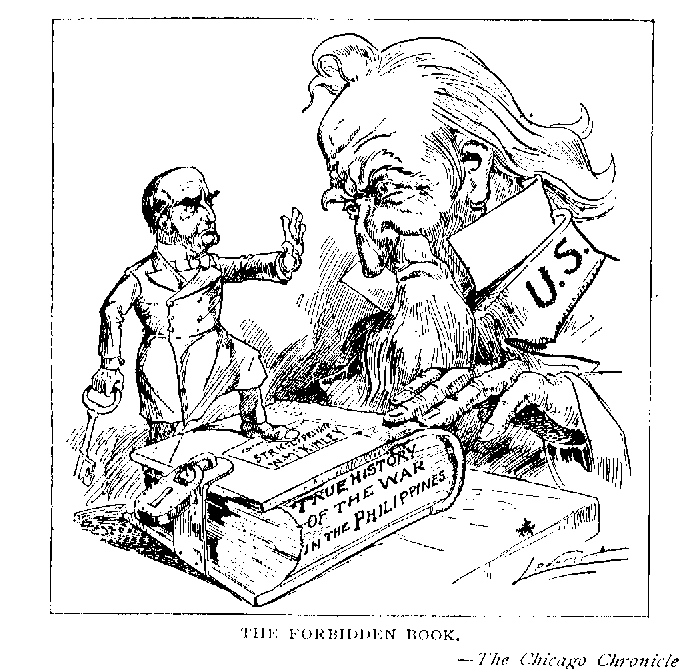Conspiracy
A
conspiracy theory, by definition, is a belief that some covert but influential
organization is responsible for a circumstance or event, and as of right now,
conspiracy theories are probably more popular in the United States than they
have ever been. In my research I set out to see what the popular American
conspiracy theories were, why they are so popular, and to try to find a common
link between them. Essentially, I wanted to know the reasoning behind them.
| The wind doesn't blow on the moon. |
| President John F. Kennedy moments before his assassination |
Now
it’s time for America’s favorite conspiracy theory, the JFK assassination.
President John F. Kennedy was shot, in the head, during a motorcade and there
is no question of the validity of that. The conspiracy theories go crazy
however when it comes to why or who killed the president. Although there are
many, many theories, the one that seems the most possible, at least in the eyes
of CNN’s anti-conspirator Dave Perry, is that the CIA actually had the
president of the United States murdered. Perry claims that this theory is the
only one that he can’t debunk. The argument is that President Kennedy was fed
up with the CIA because the agency was trying to kill Cuban Dictator Fidel
Castro. Because of this, the CIA feared that the president would disband them.
A strange fact that comes from this is that the former head of the CIA, Allen
Dulles, was on the Warren
Commission. The Warren Commission was appointed to
investigate the assassination and found that Lee Harvey Oswald had acted alone
to kill Kennedy, which went against what a lot of Americans believed. Another
weird fact: Oswald was spotted at the Russian Embassy in Mexico City weeks
before the assassination and the CIA knew who he talked to, but not what he
said.
| Allen Dulles |
Now,
the most controversial conspiracy theory of all time, 9/11. Here are the “facts”
as presented by Conspiracy Theorist Alex Jones in his YouTube video “9/11: A
Conspiracy Theory” in a very sarcastic tone, if I may add. On the morning of
September 11th, 2001, nineteen men armed with box cutters, directed
by a man on dialysis in a cave fortress half-way around the world using a satellite
phone and a lap top, directed the most sophisticated penetration of the most
heavily defended airspace in the world. The hijackers managed to knock down
three buildings with two planes in New York, while in Washington a pilot who
couldn’t fly a single-engine plane was able to fly a 757 exactly level to the
ground, hitting the Pentagon in the budget analyst office. Oddly enough, at the
time of the crash into the Pentagon, staffers were working on a case that
involved 2.3 trillion dollars that the defense secretary had reported missing.
It was also reported that a hijacker’s passport was found blocks from the World
Trade Center crash site. Alex Jones also reports another number of “coincidences”
regarding the terrorist attacks, but I believe I have reported enough to state
my case. On another note, NFL wide receiver Donte Stallworth did his own
research in a Huffington Post Article on the attacks. Stallworth states that
people believe that individuals within the U.S.
government conspired with Bin Laden
decades ago and it is even known that the CIA helped the Mujahdeen leading up
to their repel of the 1977 Soviet invasion of Afghanistan, as did Bin Laden.
According to the 2006 Scripps Howard Poll, 36% of Americans believe it was “somewhat
likely” or “very likely” that federal officials assisted in 9/11 attacks or
took no action to stop, because they believed these officials wanted to go to
war in the Middle East.
 |
| A common phrase uttered by 9/11 conspirators is that jet fuel can not melt steel beams, which is a fact. |
The
most interesting part of my research was finding out why people believed
conspiracy theories. As someone who does find them interesting, I’ve wondered
what makes some people get so caught up in them to the point that they believe
all of history is in fact a conspiracy. According to Scientific American,
belief in conspiracy theories now cuts across all genders, races and ages. The
New York Times found that the best predictor of belief in a conspiracy theory
is the belief in other conspiracy theories. The Times also published that
psychologists found that people who believe in conspiracy theories or more
cynical about the world and politics in general and tend to have lower self-esteem.
They also found that conspiracies are a way of reacting to uncertainty and
powerlessness. In my words, this basically means that they believe that people
who believe in conspiracies feel as if they get some sort of power out of it. Also,
the Times reported that looming threats such as recessions or terrorist attacks
cause a part of the brain called the amygdala to jump start the rest of the
brain into a state of analytical overdrive, which essentially makes someone
start to think hard about anything and hang on to small details. The best quote
I found in my research was from a Historian at the University of California –
Davis, Kathryn Holmsted “Conspiracy theories wouldn’t exist in a world in which
real conspiracy theories did not exist.” Now, with all this being said, it
would still be hard to understand a conspiracy theory like 9/11, in which the government
killed a lot of our own people. However, our government has hurt us before.
From 1932 to 1972, the United States Public Health Service denied potential lifesaving
treatment to African-American men with syphilis as part of a study, and in the
1970’s, the CIA tested LSD on psychiatric patients and even hired prostitutes
to seduce employees of the agency and trick them into doing LSD.
After
figuring out why people believed in conspiracy theories, I began to wonder what
made a good conspiracy theory. Robert Goldberg of the University of Utah states
that the keys to conspiracy success are media expertise, passion and appearance
as Paul Reveres, and according to Scientific American, a good conspiracy theory
contains four parts: 1. A group 2. Acting in secret 3. To alter institutions,
usurp power, hide truth or gain utility 4. At the expense of the common good.
Goldberg also tells us that conspiracy theories have changed over the years. He
states that before the second half of the 20th century, conspiracy
theories were focused on outsiders: Jews, Catholics and Communist. Now,
conspiracy theories focus on insiders – government, Wall Street and the
military. It is also important to understand that the internet has also played
a significant role in the popularity of conspiracy theories. People can now
google any possible conspiracy theory and may find it.
| This just fits |
Works Cited
Huffington Post -- found information on why people do still believe in 9/11 conspiracy theories. Also, this website gave information from Robert Goldberg, who explains the keys to a successful conspiracy theory. Written by a NFL player and Tennessee graduate, Donte Stallworth.
Time -- this website provided information on the moon landing. It also gave many theories and reasons as to how or why the the moon landings were a hoax.
CNN -- gave Dave Perry, an anti-conspirator's point of view on the JFK assassination, provided good facts and evidence into why the only logical conspiracy theory behind the situation was that the CIA had actually assassinated JFK.
Salon -- provided information from previous instances in which the government had intentionally harmed civilians, such as the Tuskegee Experiment, the CIA testing of LSD, and the harassment of MLK by both the CIA and FBI.
Scientific American -- gave statistics on belief in conspiracy theories. Also provided examples of what makes a good conspiracy theory and things that may cause one to believe in conspiracy theories.
New York Times -- best source by far. Gave the most information on why someone would believe in conspiracy theories and what causes a person to believe in a conspiracy theory. The quote from Kathryn Holmsted came from the Times.
9/11: A Conspiracy Theory -- gained information from Alex Jones point of view. This source was the main topic of the paragraph about the 9/11 conspiracy theory. Found it to be very funny

